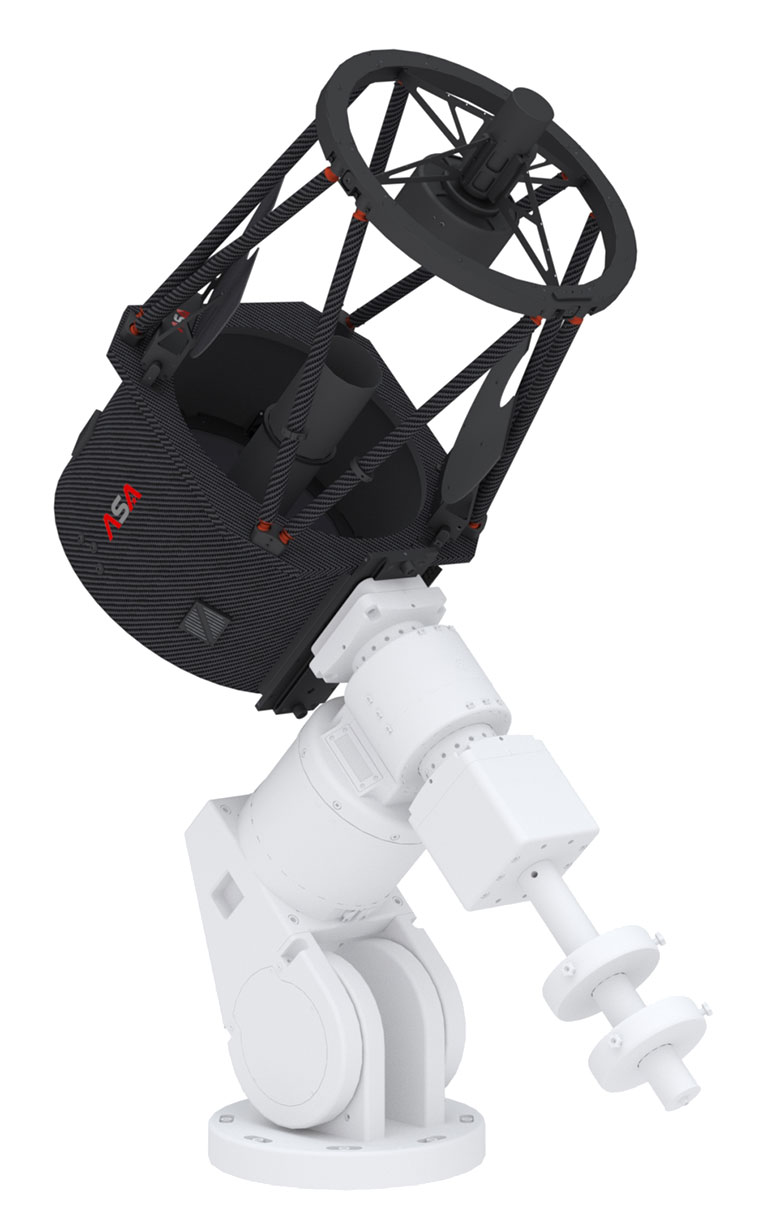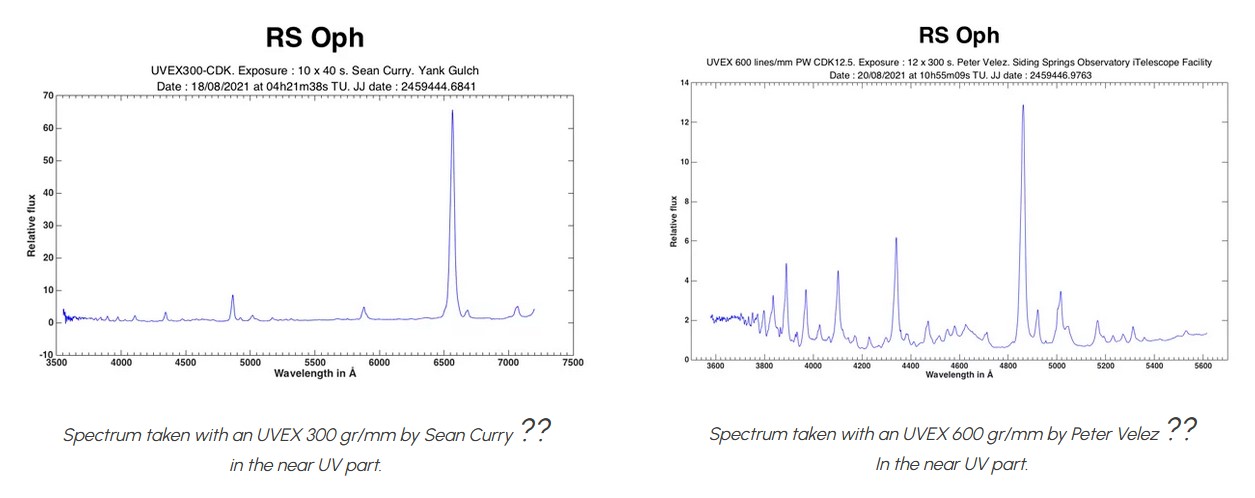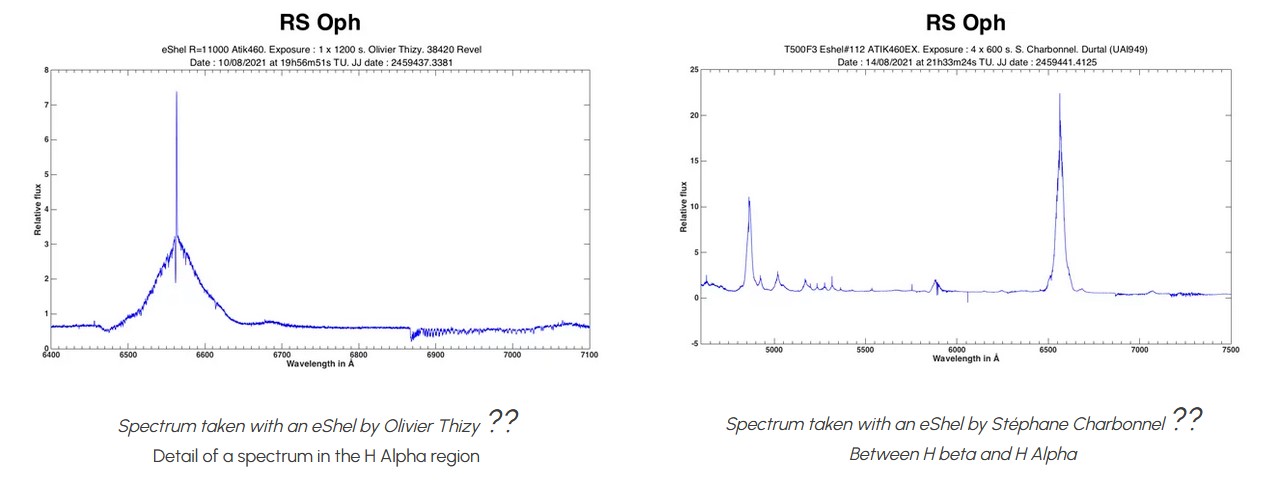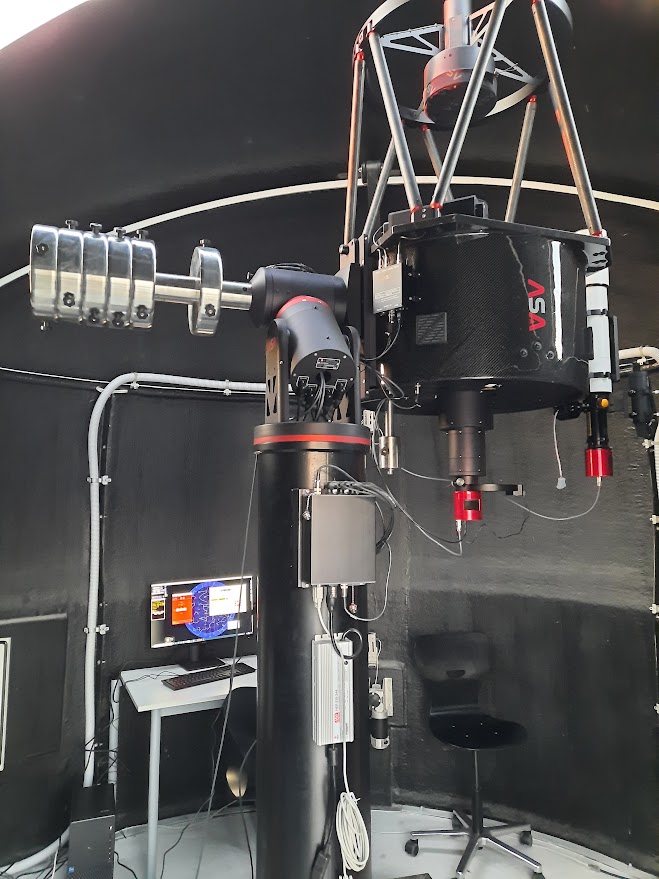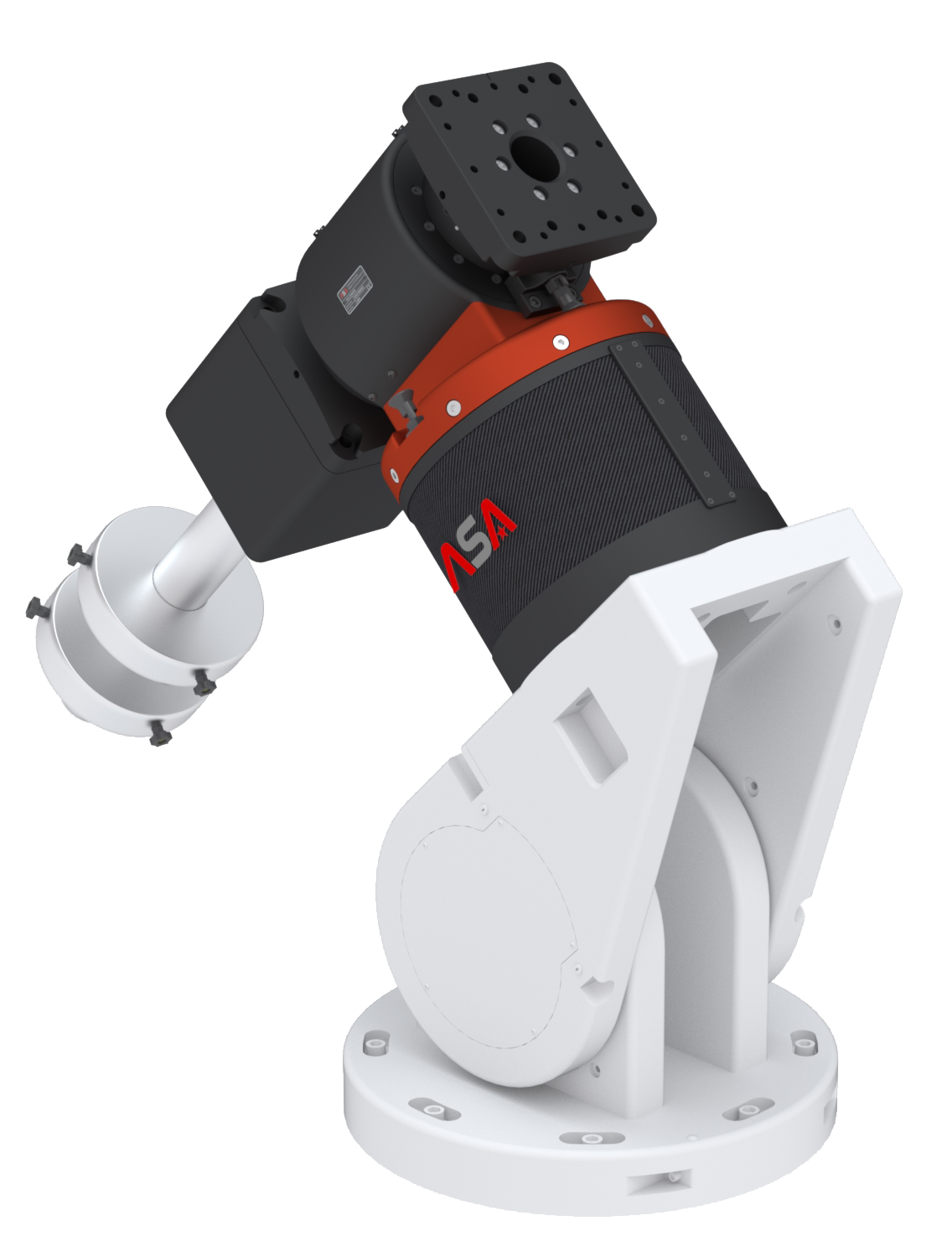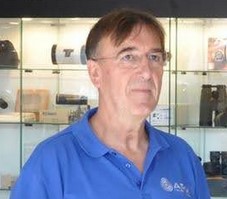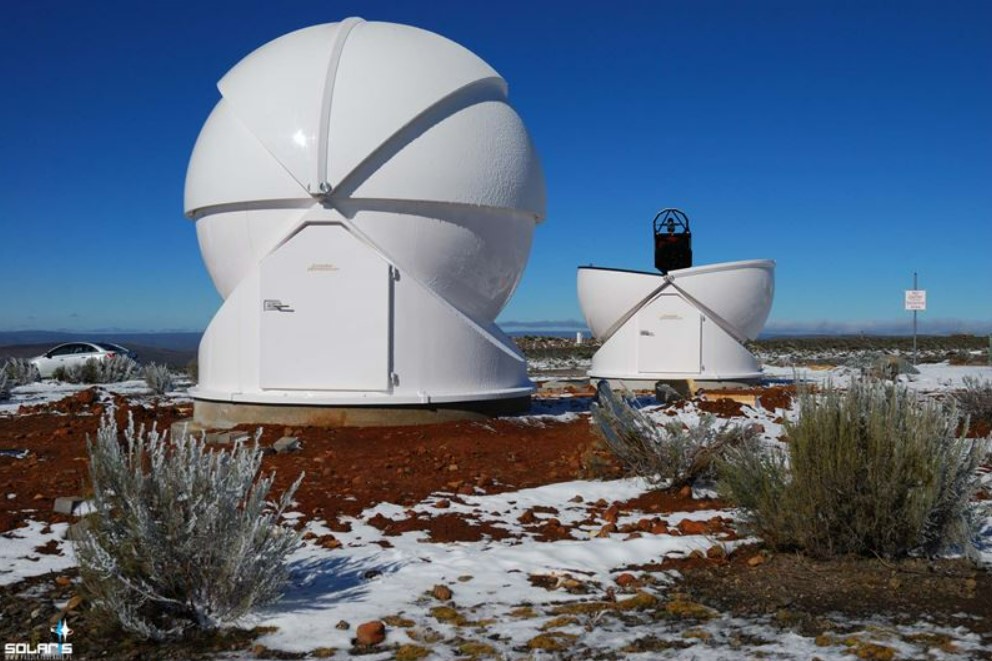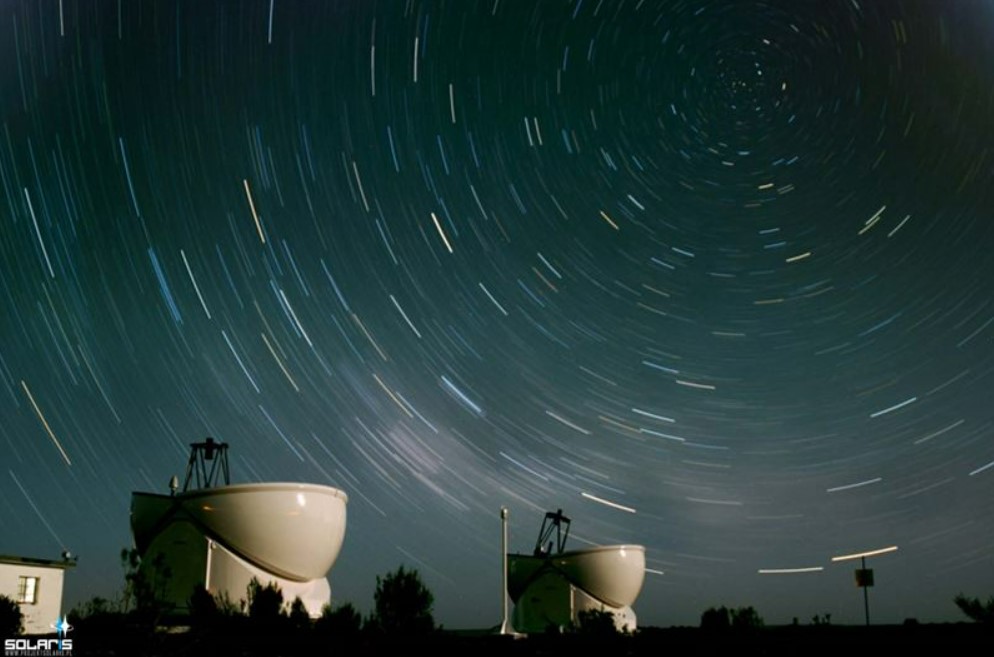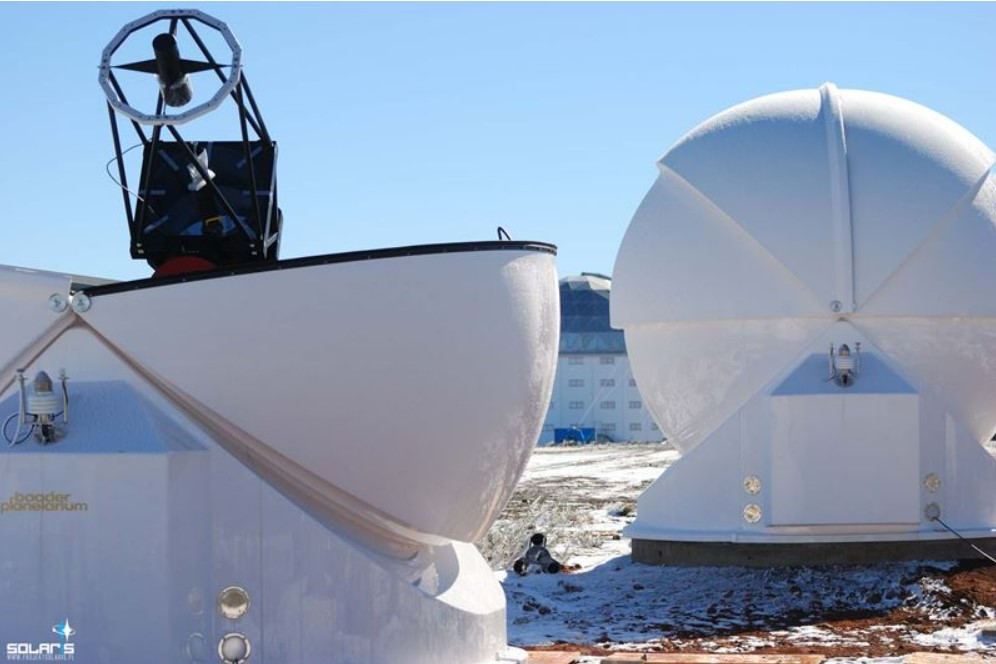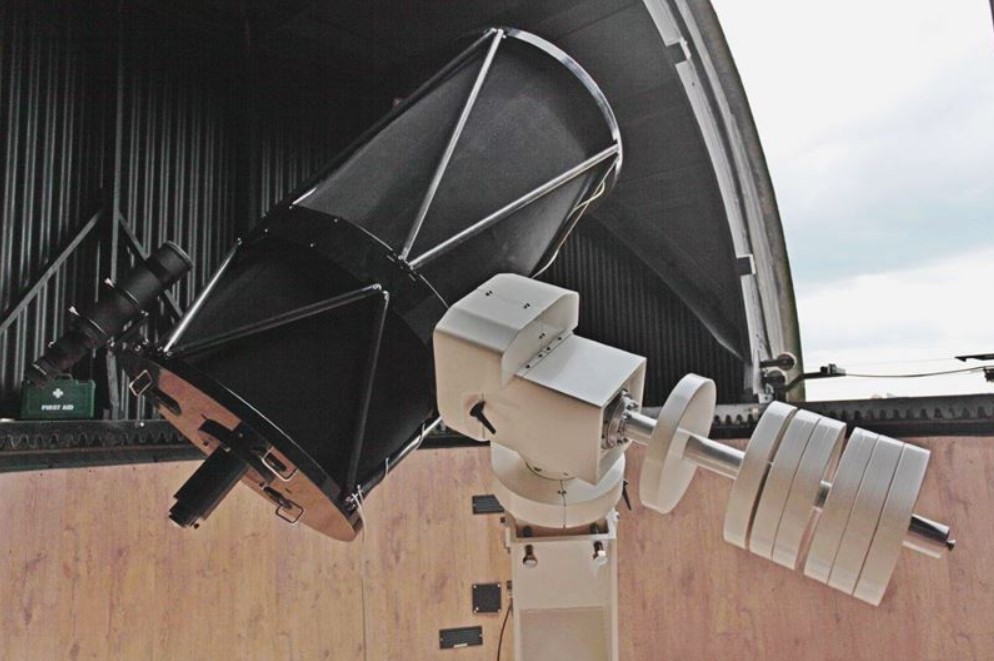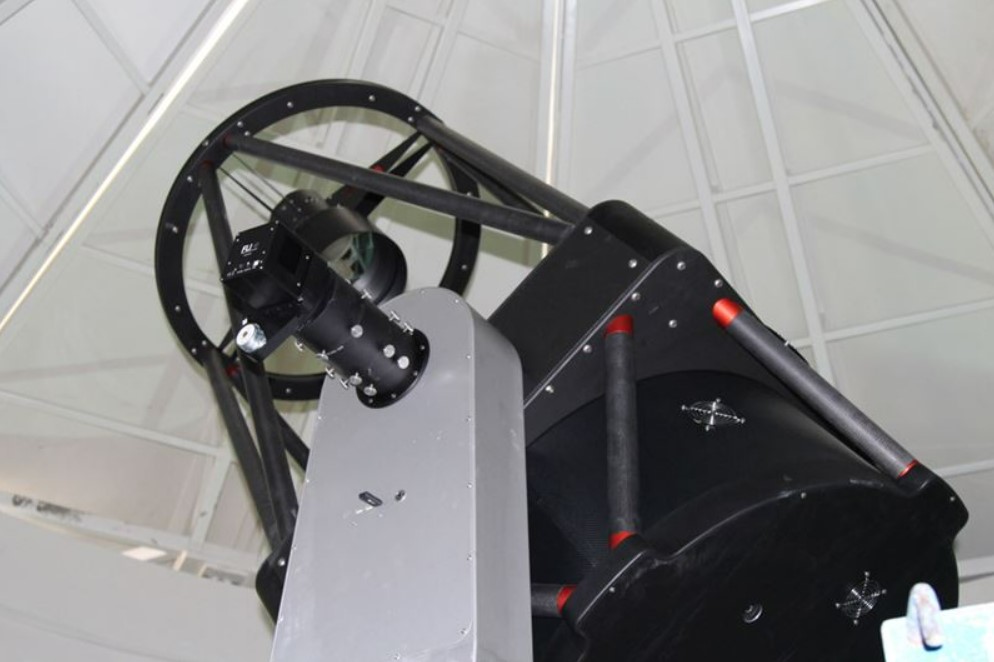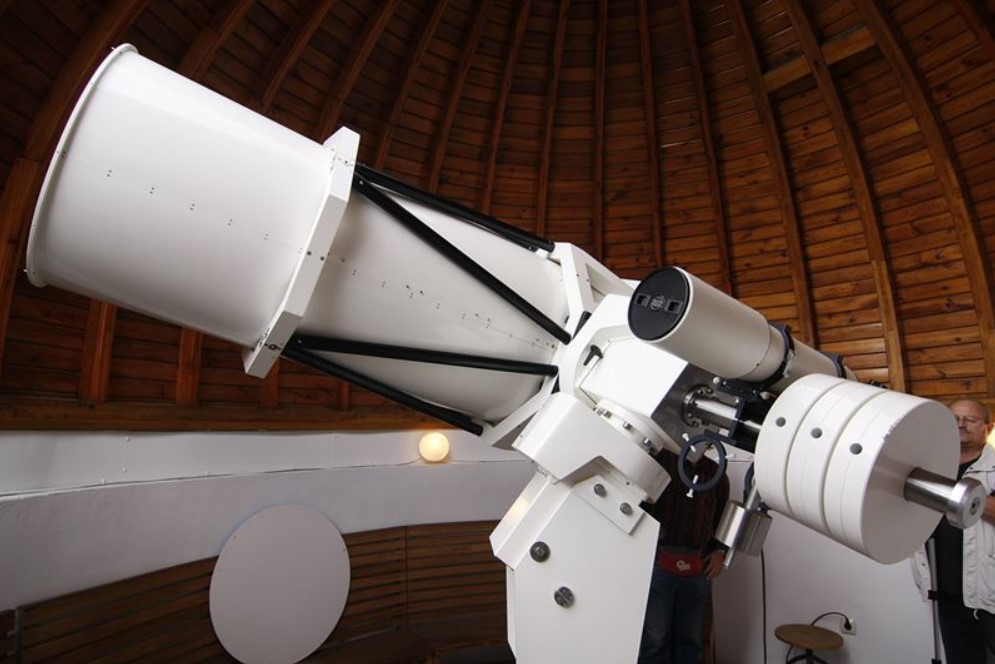By Olivier Garde
Introduction
A Nova is a “new star” that appears in the sky. In fact, this star existed long before it was suddenly accessible to our instruments (even in a few rare cases to our eyes), but its brightness increases very suddenly because of its outburst. In general, this explosion does not destroy the star, and it may even be that these explosions are recurring – the general mechanism is now fairly well known.
A Nova is always an “event” in astronomy: if it can be observed very regularly in spectroscopy as soon as it is discovered, we observe a very rapid evolution – on the scale of a few minutes, then of a few days – of its spectral signature. This evolution teaches us a lot about the physics and kinematics of the explosion; it is a magnificent laboratory for astrophysicists.
A Nova is also the privileged opportunity for the community of amateur astronomers to make a very useful contribution to Science. Often these objects are accessible to small instruments. And above all, by their reactivity and their geographical distribution in the world, amateurs can do what professionals often do not know (anymore?): Observe very quickly and very regularly. However, it is clear that the more quickly we observe a nova, the more precise information we will derive from it: over time, the explosion is diluted.
On August 8, 2021, the recurrent nova RS Oph was observed in outburst at magnitude V = 5. The amateur community immediately mobilized to realize many spectra at various resolutions with various spectrographs (with resolving powers R = 600 to R = 30,000).
 Between August 8th, 2021 (date of the announcement of the outburst of RS Oph) and August 23th, 2021 (date of the 1st publication with amateur data), 142 spectra were produced and deposited in the ARAS spectral database. More than 3/4 were performed with spectrographs from the range offered by Shelyak Instruments: Alpy 600, LISA, LHIRES III, UVEX, eShel and a Whoppshel.
Between August 8th, 2021 (date of the announcement of the outburst of RS Oph) and August 23th, 2021 (date of the 1st publication with amateur data), 142 spectra were produced and deposited in the ARAS spectral database. More than 3/4 were performed with spectrographs from the range offered by Shelyak Instruments: Alpy 600, LISA, LHIRES III, UVEX, eShel and a Whoppshel.
75% of observers are equipped with Shelyak spectrographs:
- 4 eshel
- 1 Whoppshel
- 6 Alpy
- 6 LHIRES III
- 2 LISA
- 2 UVEX
The greatest number of spectra was carried out with an eShel spectrograph at R = 11,000 (46 spectra), then we find in second almost equal spectra LHIRES III (26 spectra) and Alpy 600 (27 spectra). The users of UVEX and LISA spectrographs produced 10 spectra and the Whoppshel at R = 30,000, 3 spectra.
In the “other” category, 6 spectra were produced with a Sol’Ex and 5 with a UVEX in 3D printing.
Examples of spectra
Here are some examples of spectra made with the various spectrographs Shelyak Instruments.
LHIRES III
Many spectra have been made with the Lhires III Spectroscope.The strong point of this spectrograph is to be able to adapt its resolution according to the magnitude of the target. During this measurement campaign on RS Oph, users did not hesitate to change gratings. Many spectra have been performed at wavelengths other than H Alpha.
UVEX
The new spectrograph of the Shelyak range, the UVEX Spectrograph was used by 2 observers in the USA and Australia with 2 different gratings (300 gr/mm and 600 gr/mm)
eShel
The eShel spectrograph produced the most spectra on this RS Oph campaign with a resolution R = 11,000 (46 spectra). Thanks to its “echelle” optical design, it covers the entire visible spectral range.
Whoppshel
The most resolving spectrograph in the Shelyak range, the Whoppshel (R=30.000) could be used here on RS Oph during the 2 nights where the target’s magnitude was less than mag. V = 5. The spectrograph was used with a 400mm telescope, but the Whoppshel gives its full potential with 1m diameter telescopes and allows lower magnitudes to be achieved.
Conclusion
RS Oph’s outburst has mobilized many amateur astronomers around the world, producing spectra with various instruments and at different spectral resolutions.
It’s still far too early to learn all the scientific lessons from this nova – the observations will continue for several more weeks, even several months (you can of course contribute yourself). Science needs time to move forward! In fact, even if the general principles of a nova are understood today, each nova has its own specificities, and it is precisely the difference between the particular case observed and the cases previously known that allow us to develop our knowledge. In this case, the first feedback from the scientific community about RS Oph confirms the interest of this particular star.
For example, Steve Shore, Astrophysicist, had a wide temporal and spectral coverage to study the phenomenon, and he has already written three “Astronomical Telegrams” (ATel) to date:
ATel #14868 from 23 August 2021
ATel #14881 from 28 August 2021
ATel #14883 from 29 August 2021
A great example of teamwork!

